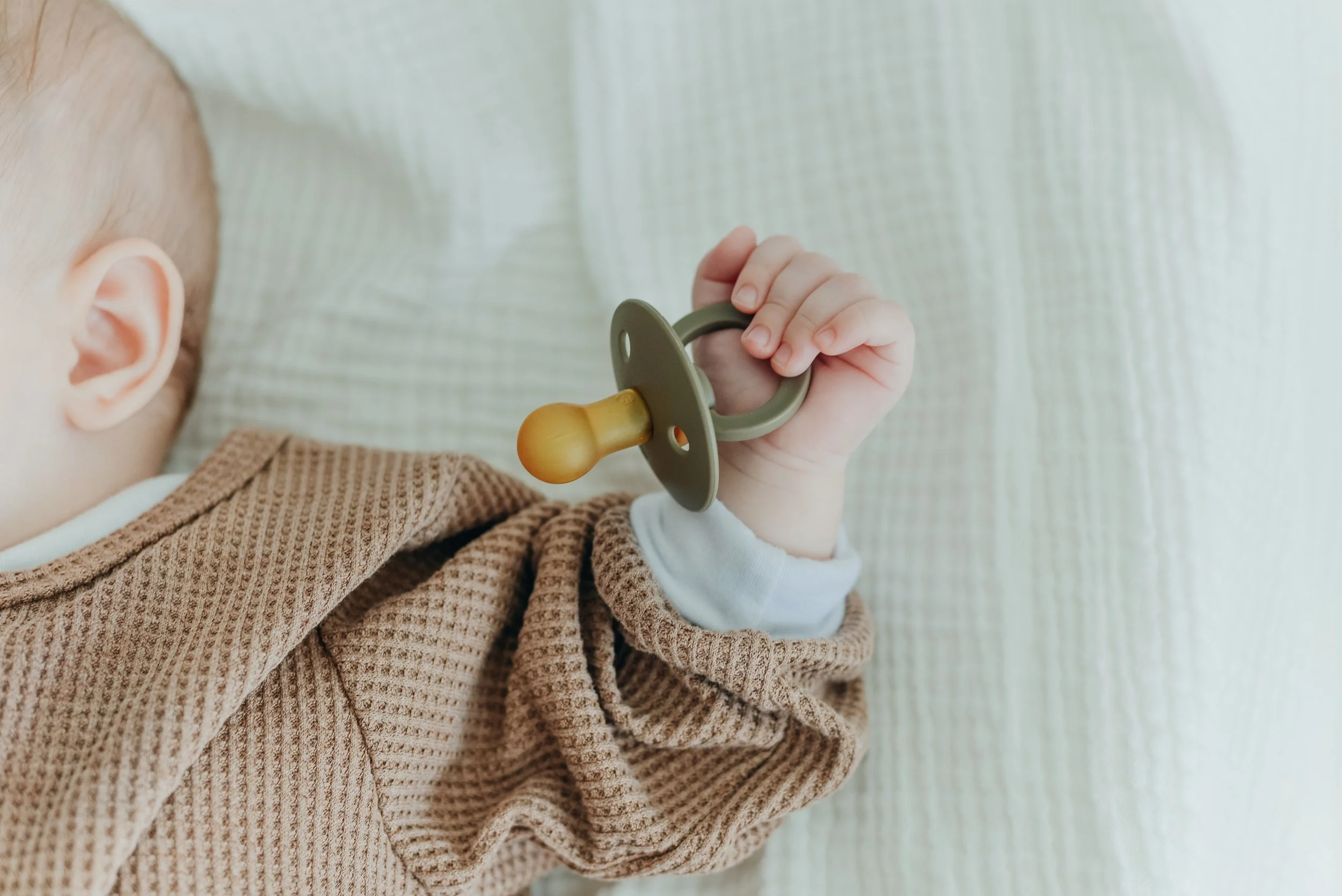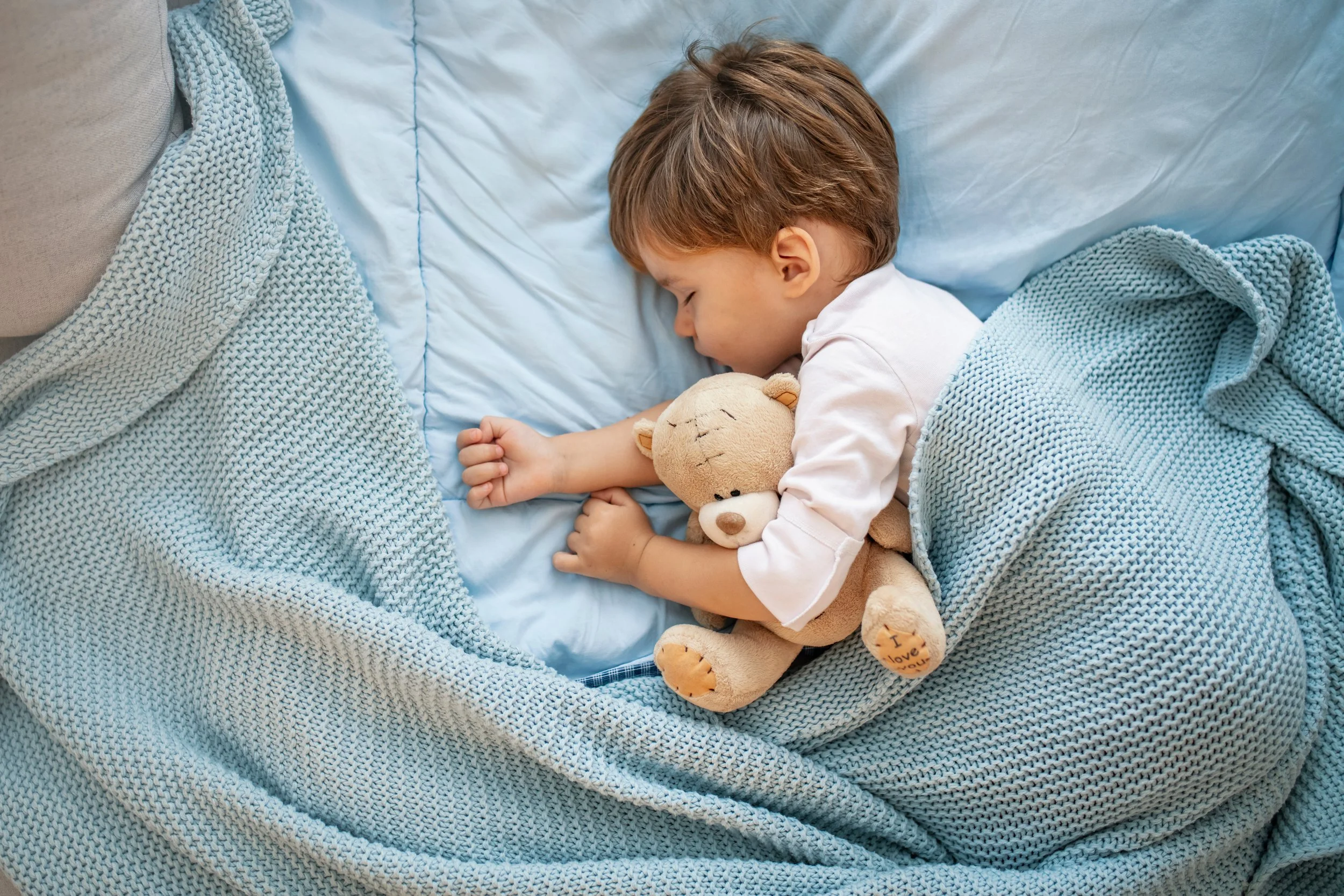Pacifiers can be useful in helping to relieve stress in situations like starting daycare, traveling, or a change in environment. But, the American Academy of Pediatrics and the American Academy of Family Physicians recommend limiting or stopping pacifier use around 6 months old.
Wait a minute… if they are so good, why would you want to get rid of it?
How to Know It’s Time to Call the Paci-Fairy
By Stacey Mademann, Sleep Squad Consultant
The American Academy of Pediatrics recommends children use a pacifier up to 6 months old to prevent SIDS. And even though there are benefits like those I named above, there are also some negative aspects of using a paci for too long…
The Benefits of Removing the Paci
Some positives to taking away the pacifier include:
Decreased risk of ear infections
Decreased risk of dental problems
Helps kiddo avoid getting emotionally connected to the paci (typically happens around 9 months old)
Now, this doesn’t mean you can’t get rid of the pacifier after 9 months — but you will most likely get a little more protest the longer you wait to let it go.
Let’s Face It: Pacifiers Are Props
Pacifiers are considered props for sleeping. If a child uses a paci to go to sleep, then the child is not actually learning how to fall and stay asleep independently. Instead, they’re using the paci to help with the process of falling and staying asleep.
This becomes a problem for many kiddos as, inevitably, the paci falls out in the night. When the child then experiences a partial wake-up in-between sleep cycles, instead of falling back to sleep, they realize their paci — the prop — is gone. Since they need this prop in order to fall back to sleep, they panic if they can’t locate it immediately. Often, the child doesn’t even realize this is what’s going on; they just know something is “off” in their environment and they don’t know what to do about it. That’s when the full-blown night waking occurs. And that’s when you, dear parent, have to come in to recreate the environment they fell asleep in — meaning, you come in to pop the paci back in.
It’s a vicious cycle that causes interrupted sleep for naps and bedtime, often leading to short naps and even more night wakings due to an interrupted sleep pattern.
Signs It’s Time to Pull an Elsa and LET IT GO
If your child takes a paci and is exhibiting the following signs, then it’s probably time to let that paci go:
Your child is waking up multiple times per night
Your child is experiencing short naps
Your child seems upset and fussy like they are not getting enough sleep
Your child needs help falling back to sleep when they wake up
3 Ways to Pitch the Paci
So you’ve decided now may be the right time. Here are 3 ways you can make the transition:
Cold Turkey
One day they have it, and the next, the pacis are gone! You will need to be consistent with this method, though. Do not give in. Kids are smart, and if you ever try to take the paci away again, they will know that if they protest or cry enough, they will eventually get it back.
Limit Paci Use
Allow the paci for stressful situations or to calm down but never allow it around bedtime or for sleep.
Call In the Paci-Fairy
Let your child know the Paci-Fairy can come and collect the pacis and, in return, they will be given a gift or coins.
Preserve It In a Build-A-Bear
Take an outing to a Build-A-Bear (or similar place) where your child can physically place their paci inside of the stuffed animal that they are making. Then, the paci is gone and your child gets a stuffed animal to sleep with — win-win.
Sticker Game
Make a sticker chart for a week and for every day that your child does not use the paci, they get to put a sticker on the board. Once they reach Day 7, they get a prize.
Drop It Like It’s Hot!
Good luck — and if you need help eliminating the prop, schedule a free call with us to talk about what strategy you may need to help your kiddo ditch that paci once and for all. A 30-minute strategy call might do the trick, or maybe your child is learning how to sleep independently and the paci is holding them back, in which case a full program may be the perfect solution.
All team members have completed training with Kelly and have learned the Murray Method. Kelly continues to support, guide and oversee the Sleep Squad as they work with the families who trust in us. That way, all clients will experience the same amazing results (and lots and lots of sleep) regardless of who supports them.
Not sure if you need to work one-on-one but need guidance?
Check out our digital course → The Murray Method for Babies
Sweet Dreams
Kelly Murray is a certified sleep coach and an award-winning pediatric sleep consultant based in Chicago offering sleep coaching services nationwide.














